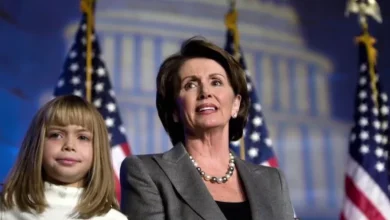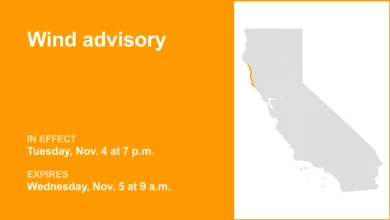Ranking the Red Sox’ top 10 prospects, and the biggest questions we have about each

Get Starting Point
Meanwhile, half of the players in the top 10 (including three of the four position players) were teenagers during the 2025 season with little to no experience in the upper levels of the minors. With those shifting demographics comes much greater volatility.
This year marked my 13th season ranking the Red Sox’ top prospects for Baseball America. Here’s a look, along with questions related to their profiles:
23 years old, Finished in MLB
MLB: 6.06 ERA, 26% K rate, 11% walk rate. Minors (3 levels): 3.04 ERA, 37% K rate, 6% BB rate.
Key question: Does he have a starter’s secondary mix?
Tolle’s big league debut after he rocketed through the system in his first full professional season was tantalizing. He has the potential to dominate with his fastball, but he needs to land a representative mix of secondary pitches in the strike zone to profile as a starter. In the minors, he showed the ability to do that with his cutter, slider, sweeper, curveball, and changeup — all of which made huge strides in 2025. He lost feel for those pitches in the big leagues, forcing him to the bullpen. He’ll likely start 2026 in the WooSox rotation to reestablish his full mix, but if Tolle’s repertoire can look anything like it did last year in Portland and Worcester, he’ll be a Red Sox rotation mainstay for years.
20 years old, Finished in Double A
Minors (3 levels): .278/.335/.388, 8 HRs, 36 XBHs, 10% K rate, 7% walk rate.
Key question: How much pop will he have?
After Arias — the best defensive shortstop in the system — showed surprising flashes of power in 2024, he returned to his natural, all-fields, line-drive approach in 2025. In doing so, he posted some of the highest in-zone contact rates in the minors (whiffing on just 6 percent of swings against pitches in the zone). But he doesn’t hit the ball with loft, creating questions about whether he projects to be more than an average everyday shortstop. Still, as a player who just turned 20, there’s a chance he can add strength and learn to drive more pitches. If he can get to 15 home runs with a bunch of doubles, with standout defense and hit for high averages, he’s a potential infield anchor.
23 years old, Finished in MLB
MLB: 2.33 ERA, 37% K rate, 5% walk rate. Minors (2 levels): 2.60 ERA, 32% K rate, 10% BB rate.
Key question: Can he add the strength to achieve a starter’s durability?
Early showed an impressively advanced mix and feel for pitching in his big league debut, but he tended to lose steam as he worked deeper in games — a continuation of a pattern that was also evident during his minor league season, when he excelled for four innings at a time before proving more vulnerable by his fifth. Can Early, who already has added considerable strength and velocity in his pro career, gain more strength to stay strong through five or six innings at a time?
Connelly Early has tended to lose steam as he pitches deeper into games.Danielle Parhizkaran/Globe Staff
21 years old, has not made pro debut
Minors: Did not pitch
Key question: Could he fast-track to the big leagues in 2026?
Tolle began in High A and blitzed through the minors to reach the big leagues in his first full pro season. Witherspoon, a first-round selection this year, is considerably more advanced entering pro ball than was Tolle, with a more far-reaching mix of pitches along with more power to his arsenal. As a result, it’s at least within the realm of possibility he could open the year in Double A, with a real possibility of zooming to the big leagues.
22 years old, Finished in Triple A
Minors (2 levels): 7.71 ERA, 44% K rate, 33% walk rate.
Key question: Can he get back in the strike zone?
Perales made it back from Tommy John surgery at the end of the year and showed electric stuff, but he couldn’t locate his triple-digits heater in the strike zone. That’s not uncommon for a pitcher working back from Tommy John, but a return to the promise prior to blowing out in 2024 is not guaranteed. If Perales can harness his power arsenal, his ceiling as a starter may surpass that of any pitcher in the organization. But based on his control and effort in his delivery, he has significant reliever risk.
22 years old, Finished in Triple A
MLB: 1 for 7, 2 BBs, 5 Ks. Minors (2 levels): .267/.340/.470, 21 HRs, 42 XBHs, 27% K rate, 9% walk rate.
Key question: Can he limit his chase rate?
Garcia has a couple of strong foundational attributes, hitting for power and contributing strong outfield defense. He’s also made startling progress over the last two seasons, suggesting room for growth for a young player. But he swung at 35 percent of pitches out of the strike zone in Triple A, well above the big league average of 28 percent. If he doesn’t improve that, he’s a platoon player.
Jhostynxon Garcia went 1 for 7 in a major league cameo this past season.Pamela Smith/Associated Press
19 years old, Finished in High A
Minors (1 level): 5.45 ERA, 28% K rate, 6% walk rate.
Key question: What will work against lefties?
Valera, who missed three months with right elbow soreness but returned for the end of the season, overpowered righties with his high-90s to triple-digit fastball, sweeper, and slider. Lefties, aided by batted-ball luck, hit .341/.398/.529 against him, and while his changeup shows swing-and-miss potential, he’ll need to improve its consistency to avoid platoon splits that would jeopardize his ability to start. But as a teenager with a huge frame and a rocket arm, he possesses mid-rotation upside.
18 years old, Finished in High A
Minors (3 levels): .281/.363/.390, 4 HRs, 29 XBHs, 16% K rate, 10% walk rate.
Key question: Can he drive the ball in the air?
Gonzales has more raw power than anyone in the system, and probably more than just about anyone in the minors. But while he hits 110-mile-per-hour rockets with startling frequency for an 18-year-old, and he showed unusually low swing-and-miss traits for a 6-foot-4-inch tower, he typically hits the ball on the ground. His 57.4 percent ground-ball rate was in the top 2 percent of minor leaguers with at least 300 plate appearances. If he can make swing path adjustments to drive the ball in the air, he has 30-plus-homer potential. If not, he lacks the defensive value to have a clear role in the big leagues.
19 years old, Finished in Low A
Minors (2 levels): 2.25 ERA, 29% K rate, 9% walk rate.
Key question: How good can his fastball be?
Fajardo, acquired in a trade with the White Sox for Cam Booser last December, opened eyes as one of the top performers in the system in 2025. He showed a solid fastball/slider/changeup mix, and actually used his slider more than anything else. His fastball, which averages 94 m.p.h. and tops out at 96, required precision to miss bats in Low A and might be vulnerable as he moves up the ladder. If he can add strength to sit at 96, he has a chance to be a back-end starter.
17 years old, Finished in DSL
Minors (1 level): .307/.362/.428, 2 HRs, 14 XBHs, 15% K rate, 9% walk rate.
Key question: What will happen when he gets to the States?
It’s not hard to dream on Soto, a switch-hitting shortstop who didn’t swing and miss a lot and who hit the ball uncommonly hard for his age and level. But a 17-year-old in the DSL comes with many unknowns. Will Soto add size that pulls him from shortstop to third base? Will he follow the path of players such as Yoeilin Cespedes and Miguel Bleis, who looked like top prospects at the complex level but struggled against better pitching? Or will he hold his own and rocket up the team’s prospect list? His ceiling rivals that of any position player in the system.
Alex Speier can be reached at alex.speier@globe.com. Follow him @alexspeier.





